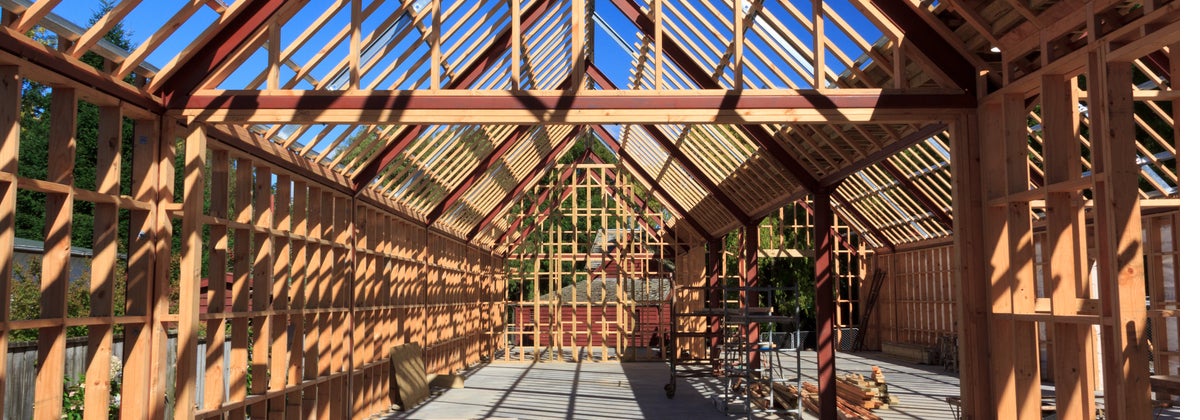When was the last time you revised the level of insurance cover on your home? According to Canstar’s latest Home and Contents Insurance Awards research, just 55% of homeowners are confident they have enough insurance cover to rebuild their home in the event of an accident or natural disaster.
And even fewer, just 41% of home owners, review their home insurance annually, leaving the majority of property owners potentially underinsured in the face of the rising costs of building a new home.
Due to the epidemic, the resulting supply chain issues and high inflation, the cost of building in New Zealand has soared over the past three years.
According to the Cordell Construction Cost Index, the price of building an average 200m² brick and tile standalone home rose by an average of 1.65% p.a. from 2018 to 2020.
However, by 2022, building cost inflation has risen to around 7.15% p.a. Fortunately, last year, inflation decreased to 5.75%. And in the the first quarter of this year, growth tailed off to just 0.5%, which is around half the 10-year average of 1.1%.
But although building cost inflation seems to have been tamed, the cost of building a home has certainly not fallen. Meaning that if you’ve not reviewed the amount your home is insured for over the past couple of years, your home could be severely underinsured.
→ Related article: How Much to Build a New House in NZ?
How much should I insure my house for?
Your level of house insurance is called the Sum Insured. The sum insured should cover the total amount it would cost to rebuild your home in the event of a disaster or accident, it includes demolition costs, debris removal, professional fees and council fees. It doesn’t include the value of your land, so it isn’t the market or rateable value of your house or property.
Some insurance providers automatically increase their customers’ sum insured values each year in line with rising building costs. But even if your insurer provides this service, it’s still worth checking to see if you agree with their sum insured total.
Regularly reviewing your sum insured is especially important if you’ve made any improvements to your home. For example, your insurer won’t know that you’ve added a new kitchen, or replaced your roof, which could have added significant value to your property.
There are a few methods for working out the cost to rebuild your home:
Online calculator
Many insurers have links on their websites through to the Cordell Sum Sure calculator. The handy tool uses Cordell’s construction costs data to give an estimate of the cost to rebuild your home. All you have to do is answer a few quick questions about your home, and the calculator does the rest.
Cost per m²
Using average building costs per m² is a quick, rule-of-thumb way of calculating the cost of rebuilding a home.
However, while it can give a ballpark figure, it can also be very misleading. Average per m² figures don’t take into consideration the design details of a home, the true distribution of building costs and materials, or any demolition or site clearance that may be required.
→ Related article: Building Costs Per Square Metre in NZ: Busting the Myth
Elemental estimating
Elemental estimating is the most thorough method of ascertaining the true cost of rebuilding your home. It covers every aspect of the rebuild, from plans and council permits, the specifications of each room in your home, through to your garden and landscaping, pool, external garaging, etc.
As it requires specialised industry knowledge, elemental estimating is a professional service best left to the experts. But while such a thorough report will, of course, cost more than a free online quote, it could prove invaluable if your home is of exceptional value or design.
How much should I insure my house for?
As each home is different, there is no one-size-fits-all replacement value answer. However, by revising your sum insured figure annually to ensure you’ve enough cover to rebuild, you can rest assured that if your home is destroyed, you’ll not also face economic ruin.
Why it’s also important to compare home insurance providers
While it’s important to review your sum insured regularly, it’s also a good idea to review your choice of insurance provider.
For as building costs have increased, so too has the cost of insurance. On the back of cyclone Gabrielle, according to RBNZ figures, the cost of home insurance over the past 12 months has jumped by around 25% for many Kiwis, especially those living in areas at risk of flooding and seismic activity.
If you do feel you’re paying too much, one of the easiest ways to reduce the cost of your premiums is to switch providers for a better deal. By comparing providers and shopping around, it’s often possible to secure a better level of cover at a cheaper price.
To this end, Canstar reviews the best home and contents providers in the market annually. This year our expert research panel crunched the numbers on 15 policies from 11 providers, awarding the best our coveted Home and Contents Insurance Awards.
For more on this year’s winners, and to start your research into a better deal on your home and contents insurance, just click on the button below.
Compare Home and Contents Insurers with Canstar
About the author of this page
This report was written by Canstar’s Editor, Bruce Pitchers. Bruce has three decades’ experience as a journalist and has worked for major media companies in the UK and Australasia, including ACP, Bauer Media Group, Fairfax, Pacific Magazines, News Corp and TVNZ. Prior to Canstar, he worked as a freelancer, including for The Australian Financial Review, the NZ Financial Markets Authority, and for real estate companies on both sides of the Tasman.
Enjoy reading this article?
You can like us on Facebook and get social, or sign up to receive more news like this straight to your inbox.
By subscribing you agree to the Canstar Privacy Policy











Share this article